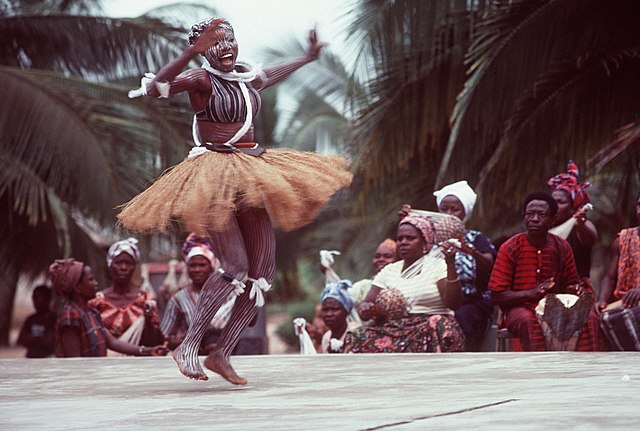Sub-Saharan African music traditions
In many parts of sub-Saharan Africa, the use of music is not limited to entertainment: it serves a purpose to the local community and helps in the conduct of daily routines. Traditional African music supplies appropriate music and dance for work and for religious ceremonies of birth, naming, rites of passage, marriage and funerals. The beats and sounds of the drum are used in communication as well as in cultural expression.
Drumming and dancing at Dakawa, Morogoro, Tanzania
African ethnic groups
Gambian boy with bowed tin-can lute
The Malian kora harp-lute is perhaps the most sophisticated of Africa's stringed instruments
African dance refers to the various dance styles of sub-Saharan Africa. These dances are closely connected with the traditional rhythms and music traditions of the region. Music and dancing is an integral part of many traditional African societies. Songs and dances facilitate teaching and promoting social values, celebrating special events and major life milestones, performing oral history and other recitations, and spiritual experiences. African dance uses the concepts of polyrhythm and total body articulation. African dances are a collective activity performed in large groups, with significant interaction between dancers and onlookers in the majority of styles.
Members from the Kankouran West African Dance Company perform at a ceremony in the Rose Garden, White House, in 2007
African dance
An African woman, wearing native garments, performs during a visit from participants in the West Africa Training Cruise 1983.
Traditional Maasai jumping dance








